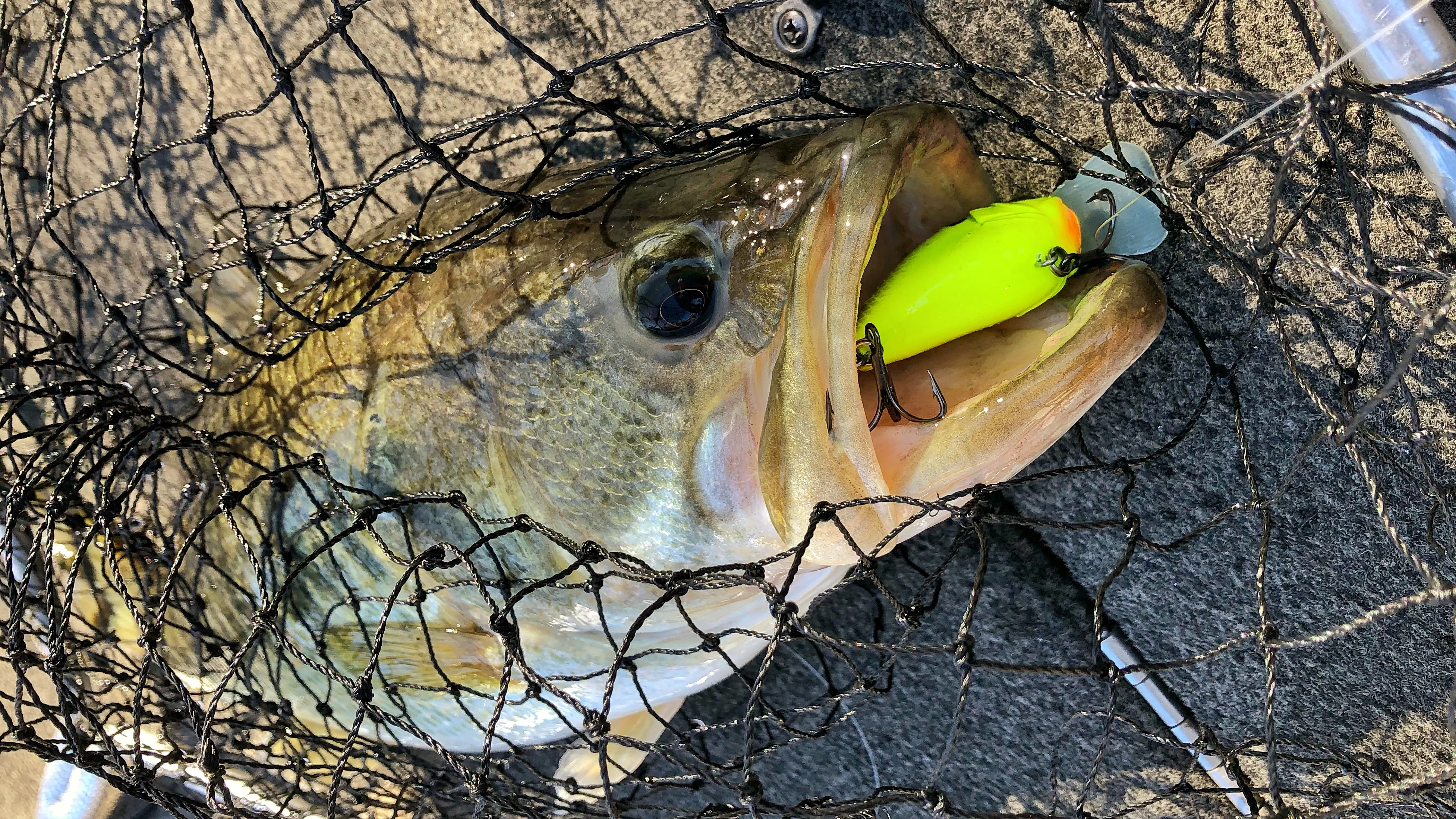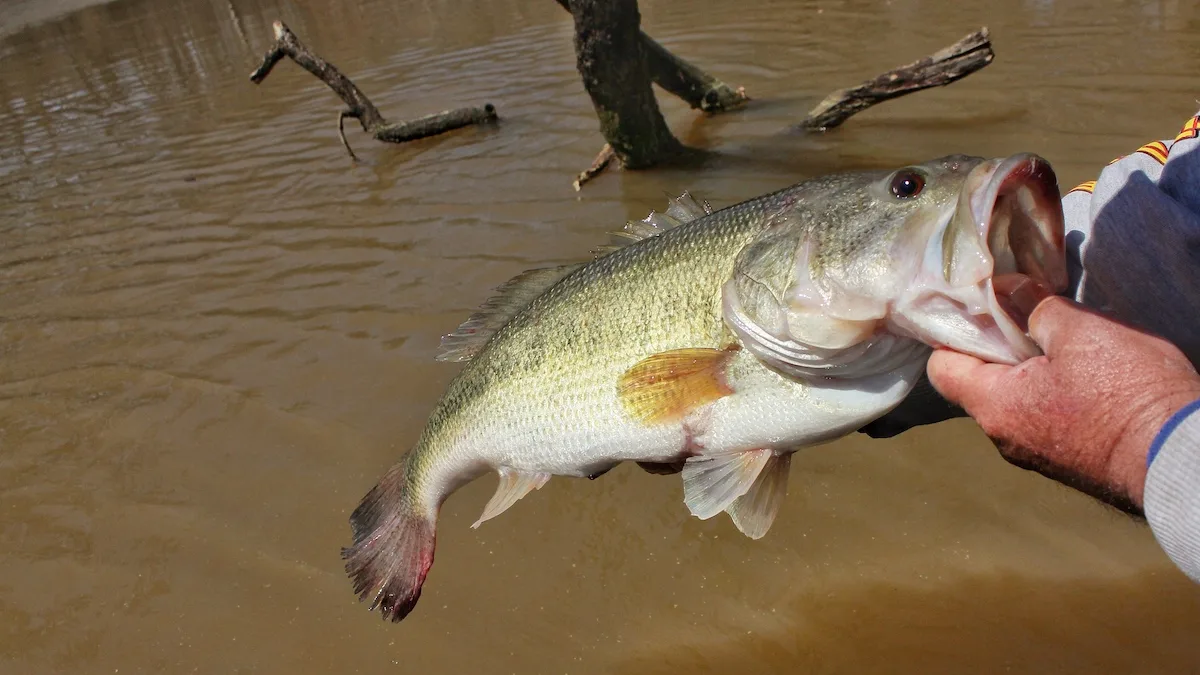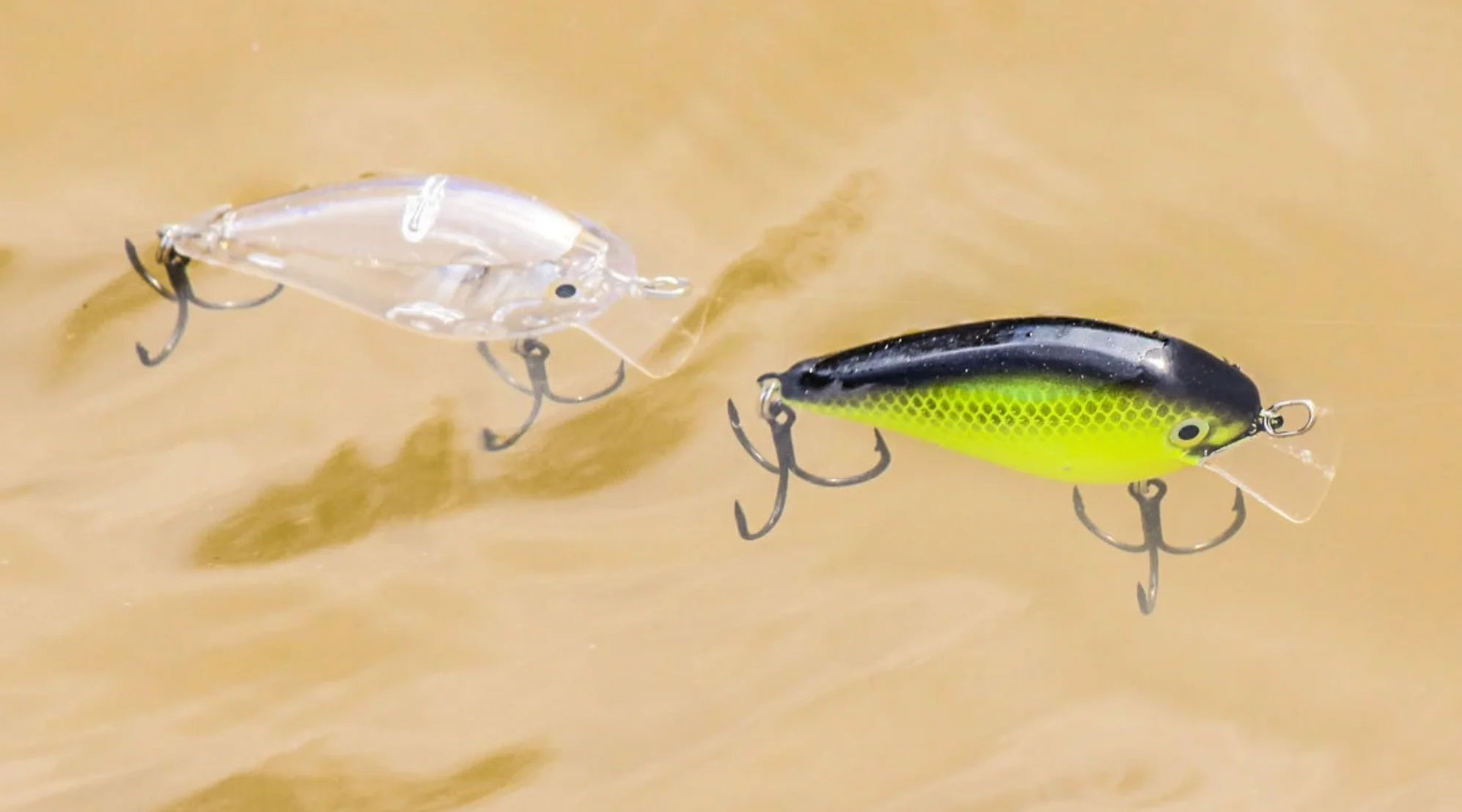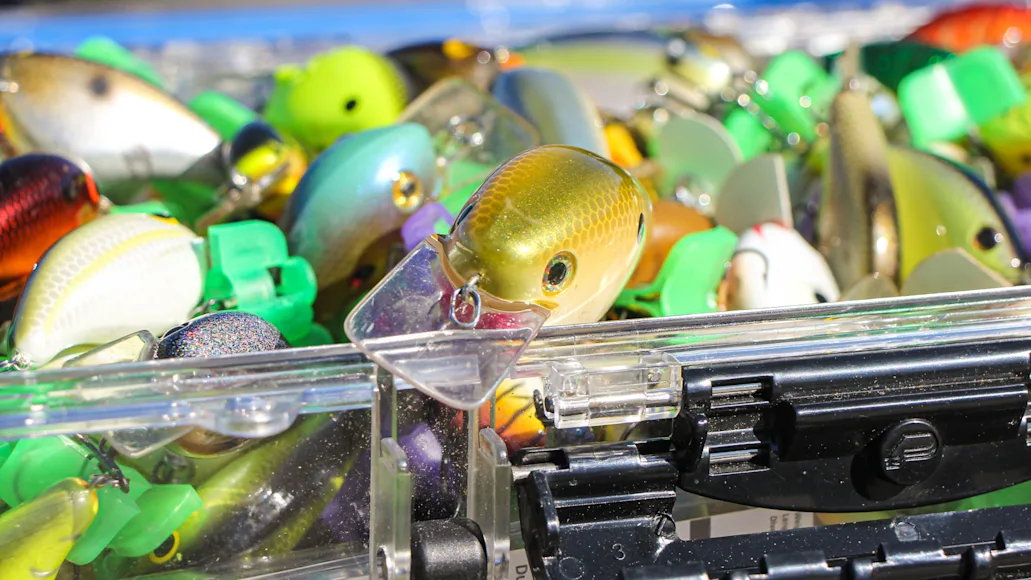Many bass anglers trade their fishing rods for shotguns during the winter, but those willing to stick out colder conditions and adjust their tactics can be rewarded with big fish. Even though largemouth bass are more lethargic during the coldest months of the year, they still have to feed. The key to catching these sluggish fish is dialing in on specific baits and changing techniques.
While many finesse baits, like the Ned rig, work during winter months, other lures can also produce bites in cold water. Specifically, the squarebill crankbait. The way you fish a squarebill during the summer differs from the way you fish it during the winter. Use the tactics below to effectively fish squarebill crankbaits throughout the winter and start landing more lunkers while everyone else is home.

Slow Down the Retrieve
Crawling a squarebill along the bottom is a great way to get bit in shallow water during the winter. When I say “crawling” and “shallow,” I mean less than 4 feet of water and turning the handle of the reel just fast enough to feel the squarebill rock back and forth. I learned just how slow I needed to fish a squarebill in the winter from my dad in a club tournament around two decades ago.
We were fishing in two different boats and sharing water with each other and another club member. All day, we bumped into each other as I would sample a pocket, and then Dad would come through behind me, or vice versa. Our other friend, Hank, mixed it up with us all day as well. At the end of the day, I had one 2-pounder, Hank zeroed, and Dad had 16 pounds.
I swallowed my pride and asked him what he had done differently. He said he fished his squarebill super slow, just crawling it along. I responded that I also fished slowly. He clarified that the fish were so lethargic that, when he got a bite, it felt like he had hooked a leaf and the fish would lay over as he reeled it to the boat. Dad said most of the fish would still have mud on their belly when he landed them because they had been sitting so still on the bottom for so long and had hardly fought during the catch.
I returned the next day and reeled my squarebill along as slow as possible, and then I slowed it down even more. Sure enough, I caught a 2- and 1/2-pounder. It felt like I hooked a small stick when it bit, and the fish just rolled over and gave up. When I got it to the boat, it had mud on its belly where it had just bit sitting in the silt.

Make Repetitive Casts
Bass are reluctant to exert energy when the water is below 50 degrees. To get a bite, you have to bring the bait right up to their noses. Even then, they won’t bite every time. With this in mind, it's a good idea to make repetitive casts at a piece of cover, especially if it looks like it would hold fish.
Take a shallow rocky point, for example. One cast across a patch of rocks like this could be rewarded with a bite immediately. But, there’s also the chance it could take two or three casts to get the bass fired up enough to eat, or it might take a half dozen casts to bring the bait right by its nose.
Let's pretend there’s one log on a stretch of otherwise bare bank. Making receptive casts to that log is a great way to ensure you’re making the most of a high percentage area. And, though it may seem counterintuitive at first, you don’t want to cast around to different parts of isolated cover like this. Throwing to one side of the log and then the other may seem like the best way to get your bait in front of a bass. But it’s better to pick the best-looking part of the cover and make repetitive casts to that portion.
You can call a fish into a strike zone by making the same cast repeatedly. Whereas, if a fish is sitting on the left of a log and you throw to the right, you could easily pull the fish to the right but then reel your bait by the cover before the bass could get to it. And then, if you swap over and cast on the left side of the log, the bass is now to the right of it and slowly doubles back, only to miss the opportunity again. Make multiple casts to areas most likely to hold bass and then move on.

Fish the Mud
During the winter, squarebills are most effective in stained to muddy water. And the water can never be too dirty. There’s a common misconception that bass can’t see in stained water, and thus, they can’t feed. But bass rely on their lateral lines to hunt and feed. These sensory systems that run down the sides of a bass are used to detect vibrations in the water, which is why rattles, hard rocking baits, and thumping blades are important.
That said, bass still use their eyesight to hunt, even in low visibility situations. It’s why chartreuse and black back crankbaits are so popular. This pattern has two drastically contrasting colors that create a flash in the water as the bait rocks back and forth. However, the color of the lure isn't as important as you think in dirty water.
During a trip on Lake Eufaula, I tied on a transparent squarebill and pulled up to a stretch of riprap that usually holds fish. The visibility was around a foot if you tossed a big bright spinnerbait into it, but this crankbait disappeared just a few inches in. I didn’t make 20 casts before I caught a fish, and in the next couple hours, I caught five or six more on it. Don't worry so much about color in muddy water. Focus on your retrieve and casting into high percentage areas.

Final Thoughts
Contrary to what many anglers think, bass will hold in as little as a foot of water until it begins to freeze. If you want to catch fish this way, you need to adjust your techniques to match the lathergic nature of bass around this time of year. Fish your bait extremely slow to give them a chance to feel it, find it, and eat it. Likewise, making repetitive casts to a single piece of cover will help the bass zero in on the bait. And lastly, go to muddy water, don’t run from it. Some of the biggest bass that stay shallow will position themselves in stained to muddy water in the winter.


